Accepted Scientific Name: Ferocactus viridescens subs. littoralis (G.E.Linds.) F.Wolf & R.Wolf
Ferokakt. Baja California 207. 2004 [Jul 2004] F.Wolf & R.Wolf
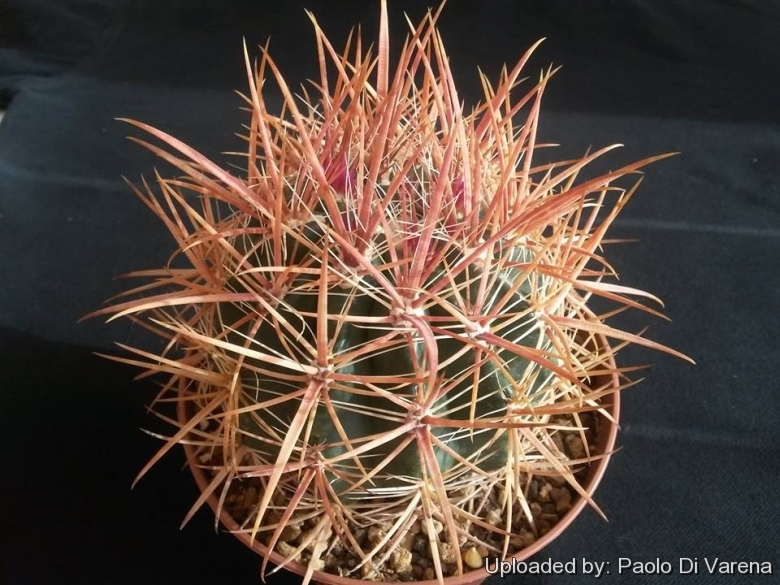
Ferocactus viridescens var. littoralis (Ferocactus viridescens subs. littoralis) Photo by: Paolo Di Varena
Origin and Habitat: It is indigenous only along the west pacific coast of northern Baja California down to Mission Santo Domingo (Mexico, Northern America).
Habitat: Grows in an area of winter rain and doesn't like high summer heat.
Synonyms:
See all synonyms of Ferocactus viridescens
back
Accepted name in llifle Database:Ferocactus viridescens (Torr. & A.Gray) Britton & RoseCactaceae (Britton & Rose) 3: 140 (t. 14). 1922 [12 Oct 1922]Synonymy: 7
Accepted name in llifle Database:Ferocactus viridescens subs. littoralis (G.E.Linds.) F.Wolf & R.WolfFerokakt. Baja California 207. 2004 [Jul 2004]Synonymy: 2
back
Description: Ferocactus viridescensSN|13617]]SN|13617]] subs. littoralis is a local or morphological form of Ferocactus viridescensSN|13617]]SN|13617]]. It distinguishes for the more numerous ribs that aren't tuberculate, for the much more dense and mostly less flattened spines (21-34 versus 15-25 of the standard Ferocactus viridescensSN|13617]]SN|13617]]) and smaller flowers usually less than 25 mm in diameter.
Habit: It is a solitary barrel cactus, sometimes wider than tall.
Stems: Pale to deep green, somewhat glossy, erect, mostly depressed-globose or globose (to short cylindric), with little apical pubescence, usually 10-30 cm tall and 10-20 cm in diameter.
Roots: Fibrous root system.
Ribs: 21-34, 1-2 cm tall somewhat rounded, obtuse, undulate shallowly notched immediately above each areole.
Areoles: Narrow elliptic to oval 10-20 mm long with brownish tomentum, spine-bearing in the lower part, felted in upper part, flower-bearing and also with several reddish glands, these becoming elongated and spinescent in age.
Spines: 21-34 per areole, central spines and larger radial spines pink or yellowish, becoming duller by age or turning yellow or horn-colored, smallest spines per areole slender, sometimes bristle-like, less than 1 mm diam. (rarely absent).
Central spines: 4 per areole forming a cross, spreading at about 45° angles, the lower one stronger and more flattened, narrowly elliptic in cross section, straight or slightly curved, conspicuously annulate, principal central spine 30-50 cm long and 2-3(-5) mm broad. As younger plant does have colourful spines.
Radial spines: 10-20 per areole, similar to the centrals but smaller 1-2 cm long, spreading irregularly, stiff and straight.
Flowers: Infundibuliform 2,5-5 long 3-6 cm on diameter, colour similar inside and out. Perianth-segments oblong, obtuse, sometimes apiculate, more or less serrulate on the margins, greenish yellow or golden-yellow with brownish midstripes; flower-tube bearing stamens almost to the top of the ovary; scales on the ovary orbicular, imbricate. Stigma lobes yellow.
Fruits: Barrel-like, bright yellow (very rarely reddish) with a pleasant acid taste, 20-35 long and 15-25 mm across, fleshy, skin leathery with about 30 fimbriate-denticulate scales. Dehiscent through basal pore.
Blooming season: Spring-early summer.
Seeds: Conspicuously bur minutely reticulate, elongate-obovoid 1,6-1,8 mm long, hylum basal but oblique.
Subspecies, varieties, forms and cultivars of plants belonging to the Ferocactus viridiscens group
 Ferocactus viridescens (Torr. & A.Gray) Britton & Rose: The 'viridescens' variety has 13-25 tuberculate ribs and 15-25 spines per areole.
Ferocactus viridescens (Torr. & A.Gray) Britton & Rose: The 'viridescens' variety has 13-25 tuberculate ribs and 15-25 spines per areole. Ferocactus viridescens subs. littoralis (G.E.Linds.) F.Wolf & R.Wolf: The 'littoralis' variety has 21-34 ribs not tuberculate. It has 21-34 spines per areole. It is indigenous only along the west coast of Baja california down to Mission Santo Domingo.
Ferocactus viridescens subs. littoralis (G.E.Linds.) F.Wolf & R.Wolf: The 'littoralis' variety has 21-34 ribs not tuberculate. It has 21-34 spines per areole. It is indigenous only along the west coast of Baja california down to Mission Santo Domingo.- Ferocactus viridescens subs. orcuttii (Engelm. ex Orcutt) F.Wolf & R.Wolf: Single, or cespitose in clusters of 15 to 20 stems ribs 13 to 30, somewhat spiraled. Flowers: yellowish or greenish. Origin: Baja California and southwestern California.
Bibliography: Major references and further lectures
1) Edward Anderson “The Cactus family” Timber Press, Incorporated, 2001
2) James Cullen, Sabina G. Knees, H. Suzanne Cubey "The European Garden Flora Flowering Plants: A Manual for the Identification of Plants Cultivated in Europe, Both Out-of-Doors and Under Glass" Cambridge University Press, 11/Aug/2011
3) David R Hunt; Nigel P Taylor; Graham Charles; International Cactaceae Systematics Group. "The New Cactus Lexicon" dh books, 2006
4) Park S. Nobel "Environmental Biology of Agaves and Cacti" Cambridge University Press, 16/ott/2003
5) Lyman D. Benson "The Native Cacti of California" Stanford University Press, 01/set/1988
6) Nathaniel Lord Britton, Joseph Nelson Rose “The Cactaceae: Descriptions and Illustrations of Plants of the Cactus Family” Volume 3, 1922
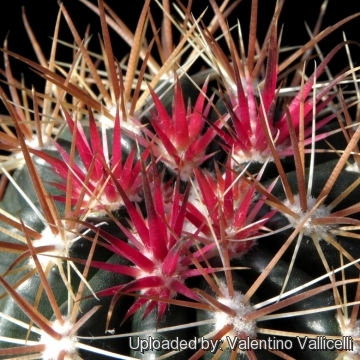 Ferocactus viridescens var. littoralis (Ferocactus viridescens subs. littoralis) Photo by: Valentino Vallicelli
Ferocactus viridescens var. littoralis (Ferocactus viridescens subs. littoralis) Photo by: Valentino Vallicelli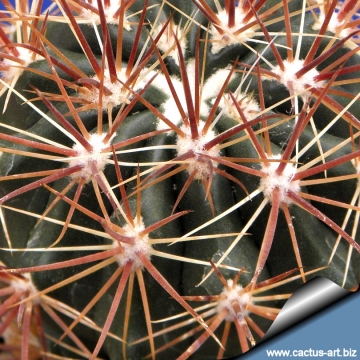 Ferocactus viridescens var. littoralis (Ferocactus viridescens subs. littoralis) Photo by: Cactus Art
Ferocactus viridescens var. littoralis (Ferocactus viridescens subs. littoralis) Photo by: Cactus Art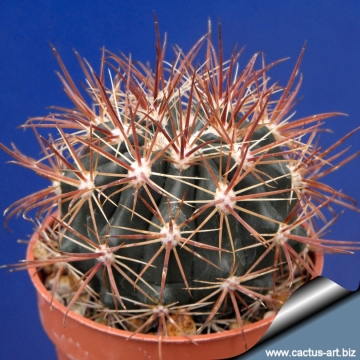 Ferocactus viridescens var. littoralis (Ferocactus viridescens subs. littoralis) Photo by: Cactus Art
Ferocactus viridescens var. littoralis (Ferocactus viridescens subs. littoralis) Photo by: Cactus Art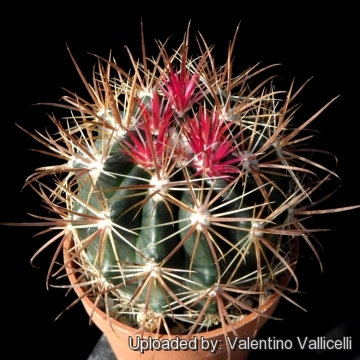 Ferocactus viridescens var. littoralis (Ferocactus viridescens subs. littoralis) Photo by: Valentino Vallicelli
Ferocactus viridescens var. littoralis (Ferocactus viridescens subs. littoralis) Photo by: Valentino VallicelliCultivation and Propagation: They are summer-growing and pretty easy plants thought slow to start. They are suited for any rich, well drained soil such us clay, pumice, lava grit, and only a little peat or leaf-mould. If potted, repot them preferably in the spring, if their roots become cramped. Generally, they should be repotted every other year in order to provide fresh soil. However, this doesn't necessarily mean they'll need larger containers. Fill about a quarter of the pot with broken crocks, gravel, etc. to promote good drainage. After repotting, do not water for a week or more. Water regularly during the aestival growth cycle (this plant need plenty of water, but do not overwater and let their soil dry out between waterings), and also needs to be avoided wetting the body of this plant while it is in sunlight. A wet cactus in the sun light can cause sun burning which can lead to scars or even fungal infections and death, keep rather dry in winter. No water should ever be allowed to stand around the roots. Feed with a high potassium fertilizer in summer.
Exposure: Outside they need a bright exposure, full sun or half shade in summer if the location is exceedingly hot or bright, inside needs bright light, and some direct sun. It can tolerate moderate shade, and a plant that has been growing in shade should be slowly hardened off before placing it in full sun as the plant will be severely scorched if moved too suddenly from shade into sun.
Frost Tolerance: Light frost protection required for safe cultivation, but can tolerate sporadic light frost. This plants need a period of cool rest in winter to produce flowers abundantly.
Diseases and pests: Watch for infestations of mealybug, scale insects and spider mite.
Plant in good conditions will start to bloom when reach the diameter of only 12-14 cm.
Propagation: Seeds are the only way of reproducing. Seed Collecting: Permit fruit to ripen. Fruit must be significantly overripe before harvesting seed; clean and dry seeds.















